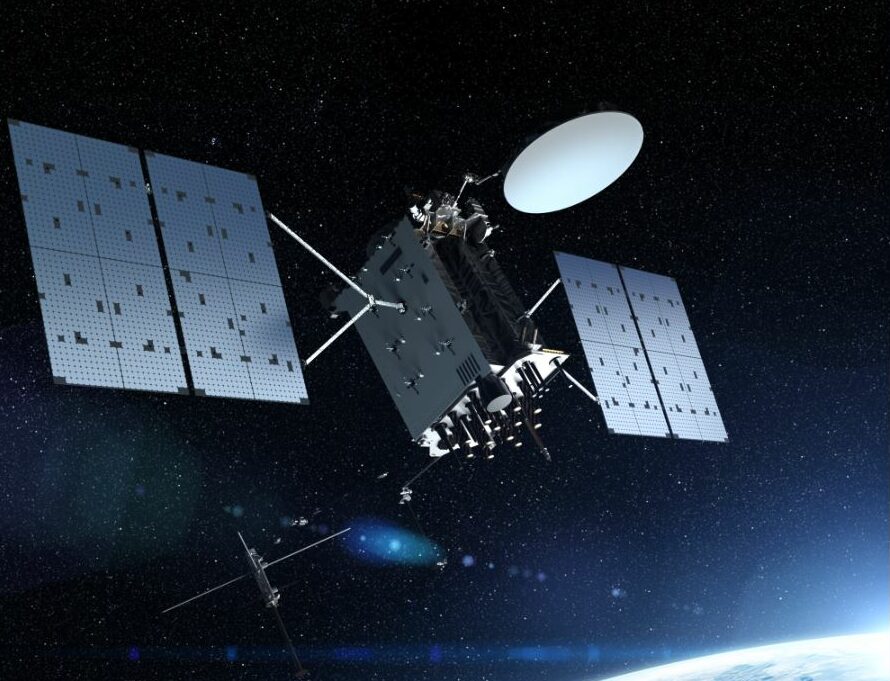WASHINGTON — Military satellites acquired under fixed-price contracts get high praise in a report submitted to Congress by the Department of the Air Force.
Two Space Force satellite programs — the Global Positioning System Follow-on (GPS 3F) and the Weather System Follow-on (WSF) — were identified in the report as “high performing,” in part because they were acquired under fixed-price contracts.
Space Force procurement chief Frank Calvelli has advocated the use of fixed-price contracts for virtually all satellite procurements. He has been critical of traditional military “cost plus” acquisitions where the government reimburses all of the costs associated with a project, plus a negotiated profit fee.
“The GPS 3F program used a fixed-price incentive fee contract with incentives for meeting schedule targets,” Calvelli wrote in the report, the contents of which were first published May 31 by Inside Defense.
Calvelli, who is assistant secretary of the Air Force for space acquisition and integration, is required by the 2022 National Defense Authorization Act to submit an annual assessment of space acquisition programs. The February 2023 report includes a list of the top five and the worst five performing programs, based on criteria “consistent with best acquisition practices.”
The GPS 3F program is one of the Space Force’s largest satellite procurements. Up to 22 satellites are being produced by Lockheed Martin under a 2018 agreement worth $7.2 billion.

In the report, Cavelli said the contract included “pre-priced options leveraging economies of scale, reducing unit costs by approximately $100 million per satellite when purchasing more than one satellite at a time.”
On the Weather System Follow-on (WSF), the report said it “met cost and schedule baselines through building upon previous flight-proven designs, leveraging long-standing civil and international partnerships, and negotiating a firm fixed price contract with a proven vendor.”
The Space Force has bought two WSF microwave sensing satellites from Ball Aerospace, each estimated to cost about $500 million.
The other three programs Calvelli identified as high performing are the Enhanced Polar System recapitalization (EPS-R), the National Security Space Launch (NSSL) Phase 2 and the Space Based Infrared System Block Buy (SBIRS GEO 5-6).
Lowest performing programs
The five lowest performers include long-troubled programs that for years have been flagged by the Government Accountability Office and other watchdogs for schedule setbacks and cost overruns.
The GPS Next-Generation Operational Control System (OCX) program “has experienced numerous cost overruns and schedule delays against its original program baseline,” the report said. “The underlying causes of poor performance are the contractor’s incomplete understanding of the tull scope of stringent cybersecurity requirements, and the government’s deficiency in effectively communicating these requirements upfront.”
The Space Command and Control (Space C2) program — intended to replace the aging Space Defense Operations Center (SPADOC) — “has not met its schedule commitment to deliver a new Space Domain Awareness C2 capability that allows for the decommissioning of the SPADOC legacy system.”
The poor performance, the report said, is due to “resources not being aligned to priorities, lack of sufficient systems engineering expertise, lack of understanding of external dependencies impacting development, and poorly defined relationships with user and test communities.
The Space Force has implemented “corrective actions” and has begun delivery of the Advanced Tracking and Launch Analysis System (ATLAS) program to replace SPADOC.
The Family of Advanced Beyond Line-of-sight Terminals (FAB-T) for secure satellite communications have experienced “over a decade of schedule delays against the original schedule,” the report said. The Space Force is working to address “obsolescence issues and platform specific requirements.”
The GPS receivers known as Military GPS User Equipment Increment 1 program “have experienced cost overruns and schedule delays” due to software development setbacks, said the report. The program is being restructured from cost-plus to firm-fixed-price to “levy more cost growth accountability on the contractor.”
The Enterprise Ground Services (EGS) — a ground systems architecture intended to replace legacy ground stations for military satellites — last year was identified by the Space Force as problematic.
Calvelli’s report said the program suffers from “unstable definitions of responsibilities between EGS and mission partners … and insufficient resources to support multiple mission partners simultaneously.”
The Space Force is looking at options to restructure the program or seek a commercial provider that can more efficiently deliver those services.
